#and Germans… again kms.
Explore tagged Tumblr posts
Text
Honestly, it’s quite shocking how easy you can tell people apart based on their outfits. My takeaway from trips to tourist hotspots.
American tourists (young women) have such chaotic outfits. I don’t know how else to describe it. The message sent out by most looks (whether it’s ‘eccentric’ Accessoires or ‘insta ready’ polyester slip dresses) is ‘this is fashion! (Right?)’. A lot of unflattering middle parts. Germans dress like they’re about to model for Northface (I’m counting myself in this. kms for real). Even if they’re not actively wearing the brand, you can feel it lurking under the surface. Jeans and practical little cross body bags, frumpy sweaters — even in stylish variations, there is an implied fleece jacket. Italians dress like they’re aware of their body in a good way.
#I saw a girl in a frumpy UNFLATTERING black pleated skirt and a slicked bun eating ice cream with a guy who wore like#short black cargo shorts and a bike chain etc#and I thought to myself ‘what an unlikely friend for a nun to have. huh. and she’s so young’#but then it turned out that she was just American.#and I saw two separate girls with huge wrinkled bows#please iron your polyester monstrosities girls!!!! this just looks cheap!!!!#monstrosity referring to the size. it was very Daisy Duck#and Germans… again kms.#even young chic girls had that air of like. cross body bags.#also saw a lot of American guys with moustaches
0 notes
Text
russia be like: we did it → Ukraine did it → it happened by itself.
and the world swallows it.
every time someone, sitting thousands of km from Ukraine, in safety and comfort, starts spreading theories in which "not everything is so clear-cut" and "it is not known who is guilty and who is lying", I lose faith in humanity.
nine years ago, russia said that it was not russian troops that invaded Ukraine. today the whole world knows that it was the russians, and the russians do not even deny it anymore.
last year, russia said that it would not launch a full-scale invasion, but we can all see that russia lied. again.
russia justified the invasion by "denazification of Ukrainians", although it is the russians who are known for the phrase "we can repeat" addressing to the Germans in relation to World War II. it is the russians who created the cult of the leader, spread their Z V swastika all over the world and promote the greatness of war.

russia justified the invasion as a "preemptive strike" so that Ukraine would not join NATO and NATO would not attack russia. although there were already NATO member countries on the border with russia. another cheap lie.
russia justified the invasion by the fact that in Ukraine "the russian-speaking population is oppressed". although even our president spoke russian before the invasion.
meanwhile, russian state channels simply say that Ukrainians annoy them, so Ukrainians must be destroyed.
russia said that it would not shell civilians, but russia began the invasion by shelling houses in the middle of the night and dropping bombs on sleeping civilians. on all of us.
russia said that its targets are only military facilities, but russia destroys entire cities and villages along with the population, killing Ukrainians every day.

since the beginning of the war, only Ukrainians have suffered. russians forcibly take Ukrainian children to the territory of russia, where the children are subjected to physical and psychological violence. with hard efforts, Ukraine managed to return a few, but currently about 30,000 Ukrainian children (only those who could be counted) are still in russia.


first the russians drowned the Ukrainians, and then they began a massive shelling of the flooded cities in order to kill those who survived and those who came to the rescue.

this is a full-scale invasion of russia on the territory of Ukraine. Ukrainians are dying. Ukraine's ecology is suffering. the russians openly declare that all of Ukraine must be destroyed. they talk about it every day on state channels, their politicians call for the extermination of Ukrainians.



russians set up torture chambers for Ukrainians, execute Ukrainians, cut off the heads, hands and legs of our people, rape children, film all of this and show off. the whole Tumblr would not be enough to list all the tragedies that russia has caused and for which we cry every day, commemorate the victims every day, mourn every day.
now the russians blew up the dam and flooded dozens of Ukrainian towns and villages. these are terrible consequences for Ukraine first of all. then for the world and environment. but not for russia.

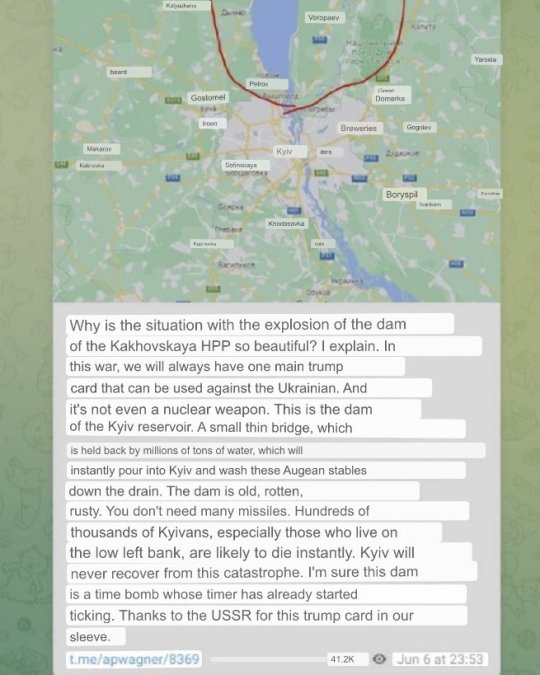
and while the Ukrainians were left alone with another russian war crime, with a crime against humanity, against the environment, russia simply says "it's not us" and people still believe it, and russia gets away with a tragic crime again.
please be sensible, russia has been at war with all its neighbors, russia is still at war in Syria, russia has been shelling Syrians even when there was an earthquake! now that russia caused the flood in Ukraine, russians are shelling Ukrainians, trying to finish off the wounded and those who did not manage to evacuate.
russia is evil and russia always lies. these are long proven facts, and if you have never delved into the topic of russian wars before, listen to the victims, listen to those whose lives russia is trying to take away.
everything is very simple right now — take the side of Ukraine. of Syria. support good.
#long post#russia is a terrorist state#stand with ukraine#russia invades ukraine#russian war crimes#russian war in ukraine#war in ukraine#support ukraine#help ukraine#ukraine#stop russia#fuck russia#fuck putin#boost#catastrophe#syria#russian war in syria#russia#2023#signal boost
370 notes
·
View notes
Text
Distances in AoT
Or: Yams has no idea of geography and the relationship between distance and travel times in AOT makes no sense.
After a long time in the works, I present to you this 3-part, long af essay about the above statement. Grab your copy of Aot and your calculator and buckle up!
Disclaimer: I’m not a numbers girl. I always struggled with math at school and cannot determine how much each party needs to chip in for a group outing without an excel spreadsheet. And yet the numbers in AoT are so out of proportion that even with my limited math talent I realised what a train wreck they were.
PART ONE: SCALE
The manga, and later the anime, inform us that there are 250 km from the center of the walls to Wall Sina; 130 km from wall Sina to Wall Rose; and 100 km from Wall Rose to Wall Maria.
For the sake of simplicity, I’m going to ignore a few facts that should be painfully obvious in a real-life setting:
1) The walls could never be perfectly circular. Because...
2) Terrain, even in super duper flat places like the Argentine Pampas or the Netherlands1, is never completely flat and never completely uniform. So, even in the Great Plains, the 230 km (equivalent to the distance from Ehrmich to Shiganshina) between Wichita and Oklahoma City, as the crow flies, become 238 km when made in a car – or 256 km on a bike (since bikes can’t take the highway). Likewise, the rougher the terrain, the higher the difference. Salzburg and Linz, in Austria, are merely 100 km away in a straight line, but the shortest route is 124 km.
And bear in mind this distances are on modern roads in modern countries, built with technology that allow us to circumvent geographical accidents such as rivers, canyons or mountains with cool bridges and tunnels. The world in which AoT is set doesn’t have those. If a river is down a canyon, first they’ll need to zig-zag down the canyon, then cross the river (via bridge or ferry at best, fording it at worst), then zig-zag all the way up again. This happens still today, even in our modern whitebread world, in places where the traffic doesn’t justify building a big-ass bridge over the canyon. When I lived in Germany, it was like that to go to the next town.

But, as I said, for the sake of simplicity, I’m going to pretend the walls are perfectly round, the terrain is perfectly flat, and that there is a straigh-ass road, as straight as Argentina’s 22 National Road between Río Colorado and Choele Choel, between each of the Wall Districts. For simplicity reasons too, I won’t be using decimals or taking the thickness of the walls into consideration.

I’m also going to assume (though this is pretty much confirmed by canon), that the only passage between walls is through the Districts.
You’ve likely seen the basic layout plenty of times over the internet.

Well, Let’s start by saying I have a huge problem with this layout. If you bother to separate walls S-R-M to scale with their informed size, the sizes used to depict the Districts are always wildly out of all proportion².
From the several panoramic views of Sigansina, Trost, etc. that are shown in the manga³, and considering the usual sizes of German-style 17th-19th century houses, which is what’s shown from down in the streets (and I’m familiar with from my time living there), the districts seem to be, at the very most, 5 km from the main wall to the district outer wall⁴, with a bridge over the river every 500 m or so. (The walls are usually visible whenever they are in the districts, so you know it’s a small area.) Yet as you’ve seen, most maps show the districts ridiculously large, going to even half the distance between walls. This not only contradicts canon, but defeats the in-canon purpose of building a concentrated, out-jutting urban area to concentrate possible titan attacks there and eliminate the threat more easily.
So in my map, I’ve adjusted the size of the districts to roughly 5 × 5 km. They look almost like dots. That’s another problem of the disproportionate maps that populate the web: it makes you lose sense of just how big the walls are.

Districts of Paradis: Mitras (center); to the East: Stohess, Karanes, Holst (from AotBTF); To the West: Yarkell, Krolva, Quinta (from AotHMOTC); to the South: Ehrmich, Trost, Shiganshina; To the North: Orvud, Utopia, [unknown].
Now, geometry is a wonderful thing. If you know the radius of a circumference, you can calculate all other possible measurements in that circumference. And in this day and age, with computers, you don’t even need to learn formulas or crunch numbers. Yay Math.
So, if radius Mt-S (Mitras-Sina) is 250 km, and wall Rose is 130 km further, and wall Maria 100 km further still, the radius Mt-R is 380 km and the radius Mt-M is 480 km.
The Districts are lined up with the cardinal points. Therefore, to go from a district on the N-S axis (e.g. Ehrmich) to the corresponding one on the W-E axis (e.g. Stohess), you have basically three options:
Route 1) Take roads we know nothing about. The most likely, logical option in a realistic scenario, unfortunately un-checkable. Also slower than the following two hipothetical routes.
Route 2) Ride atop or along the wall. For numbers, I’m assuming a flat wall top. Because we know the radius of the walls, we can calculate the arc length between any two districts (blue in map).
Route 3) Use an imaginary, straigh-ass road between two adjacent districts on a given wall (e.g. Ehrmich-Stohess, Trost-Krolva). Again, because we know the radius of the walls, and the angle of separation of the districts (90°) we can calculate the length of this chord line (brown in map). Note that this solution doesn’t work for districts in Wall Maria, as the resulting chord would intersect wall Rose, and there is no passage there (red in map).
So, how long are these distances? EXTREMELY.

The Arc distance (riding along the wall) between adjacent wall districts is:
Wall Sina (e.g. Ermich-Stohess): 393 km (more or less equivalent to a straight line from Mar del Plata to Buenos Aires).
Wall Rose (e.g. Trost-Karanes): 597 km (Paris-Montpellier).
Wall Maria (e.g. Shiganshina to Quinta): a whooping 754 km (San Diego-Sacramento)
The Chord line distance (straight line between two adjacent wall districts) is shorter, but not by that much (about 10 % less):
Wall Sina: 352 km (Mar del Plata-La Plata)
Wall Rose: 537 km (Paris-Orange)
Wall Maria: 679 km in theory (San Diego-San José) but, as explained, the chord line between Wall Maria districts is interrupted by Wall Rose, so that route is out. The shortest alternative would be to ride in a very slight curve approximating Rose; I couldn’t find a suitable calculator to let my mathematically challenged self get the exact number but I reckon it’s around 700-720 km (San Diego-San Francisco).
The takeout from this is that distances in AoT are HUGE.
Moreover: We know the island of Paradis is based on the island of Madagascar. The diameter of Wall Maria is 960 km (480 × 2), but the island of Madagascar has a maximum width of roughly 590 km.

So we have two scenarios here:
1) The world of AoT happens in a very big planet
2) Yams (and his editors) suck at maths and spacial awareness big time.
Guess which one I’m betting on.
Part 2 Part 3
Notes:
¹ Having grown up in Argentina and living in Europe, but also mindful that many reading this are from the US, I’ve mixed cities from all those locations as real-life examples.
² There is one and one map only, in chapter 5 of the manga, that depicts the walls more or less realistically, but it also shows the geography within the walls as pretty non-flat, non uniform, no straight-roads, so I’m being very generous with my calculations here, borderline delulu.
³ I was going to illustrate this with a few shots of the districts, but as I started gathering said shots from the manga I found myself opening yet another can of worms, for the differences in size of a given city between chapters are enough to merit their own post I’m afraid. Not that I can commit to one atm.
⁴ Though, realistically, European medieval walled towns were no larger than 1 km across. Nördlingen, in which Shiganshina is inspired, as well as Rothenburg o.d. Tauber and other partially preserved walled towns are 500 m in diameter.
31 notes
·
View notes
Photo
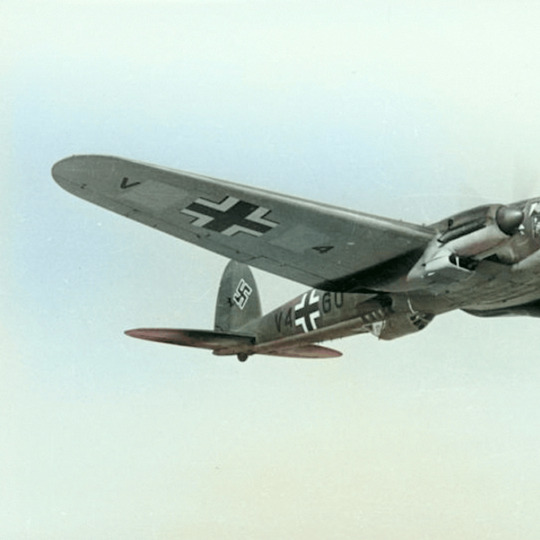
Heinkel He 111
The Heinkel He 111 was a medium two-engined bomber plane used by the German Air Force (Luftwaffe) during the Second World War (1939-45). Heinkel He 111s contributed significantly to such campaigns as the Battle of France, the Battle of Britain, and the London Blitz, but were increasingly replaced from 1941 by the more modern and faster Junkers Ju 88.
Early Designs
The He 111 was first imagined as a civil airliner for Lufthansa, but when the Nazis came to power in Germany in 1933, production turned more openly towards machines of war. The Treaty of Versailles after the First World War (1914-18) had strictly forbidden Germany from possessing a military air force, but the German leader Adolf Hitler (1889-1945) went ahead and formed several secret squadrons anyway. Another way around the restriction was to build civilian craft that could easily be converted into bombers; the He 111 fell into this latter category.
Designed by Siegfried and Walter Günter and based on their earlier He 70 model, the He 111 bomber was manufactured by Heinkel, an aviation company founded and run by Ernest Heinkel (1888-1958). Heinkel had extensive experience with military aircraft, having built planes for the German Navy and the Austro-Hungarian army in the First World War. After much debate between the German high command and Hitler, the Luftwaffe bomber command (Kampfwaffe) was obliged to adopt the position that bombers should primarily be used strategically to assist ground troops. This meant that unlike, say, the British Royal Air Force, the Luftwaffe concentrated not on heavy bombers but building squadrons of more versatile medium bombers. The He 111 was the result of this thinking, that is, an aircraft with multiple tactical uses, but one not capable of carrying very heavy bomb loads that could deliver a significant blow to ground targets. The He 111 was hampered, too, by its short range as the theatre of war expanded and Germany sought to bomb Britain.
The first He 111 prototype model was flown in February 1935 at the Heinkel works at Rostock-Marienehe (now Rostock). Design tweaks included shortening the wings and improving stability. At this stage, the aircraft were powered by BMW engines. By 1936, Lufthansa was flying a number of He 111s as airliners and transport planes. The aircraft achieved the title of 'the world's fastest passenger plane' when a top speed of 250 mph (402 km/h) was recorded.
Meanwhile, military versions were being built, which had a slightly longer nose and machine-gun armaments. The bomber version was not powerful enough for requirements, though, and the BMW engines were replaced with Daimler-Benz engines (later models replaced these again, this time with Junkers Jumos). By 1937, and thanks to a large ministerial order, Heinkel built a dedicated factory for He 111s at Oranienburg close to Berlin. Further developments followed such as increasing the fuel capacity and making the tanks self-sealing, increasing the armour protection, making a straighter wing so that factory production was more efficient, moving the forward gunner a little to the side to give the pilot better visibility, and giving more transparency to the cockpit area and nose section, a distinctive feature of the He 111.
Heinkel He 111s were first used in action by German forces participating in the Spanish Civil War (1936-9) in the Legion Condor units and then throughout the Second World War by the Luftwaffe. Other air forces which used He 111s included the Chinese, Hungarian, Romanian, Slovakian, Spanish, and Turkish.
Continue reading...
24 notes
·
View notes
Text






12th June 1997 saw The island of Eigg pass into community ownership when it was purchased by the Eigg Heritage Trust.
After years of instability, neglect and lack of secure tenure, the Isle of Eigg Heritage Trust was able to purchase the island on, largely due to the generosity of around ten thousand members of the general public
The Hebridean island of Eigg is second to St Kilda as the most famous of the smaller Scotttish isles. While St Kilda is renowned for its extinction as a place of human settlement, Eigg is celebrated for its rebirth. After overthrowing its eccentric, authoritarian owner two decades ago, this 31 sq km (12 sq mile) patch of moor and mountain was reborn as what is sometimes mockingly called the People’s Republic of Eigg.
This triumph of David versus Goliath has forged an apparently inspirational, sustainable community of 100 people.
A series of owners tried unsuccessfully to run some sort of business on Eigg during the latter part of the 20th century, from the Welsh Farmer whose Hereford cattle promptly died of bracken poisoning. Disheartened, he got rid of Eigg for £110,000 in 1971 to Bernard Farnham-Smith, self-styled naval commander, head of an English charity that wanted to run the island as a school for disabled boys, by 1973 the Eigg’s own school had only one pupil. Rather more successful was eccentric Keith Schoenberg, a dashing, Yorkshire-born businessman and former Olympic bobsleigher, acquired Eigg.
He was a charming, persuasive adventurer, who, over the next 20 years endeared himself to the guests by allowing them to perch on the running board as he drove them to beach picnics or moonlit games of hockey. One failed marriage after the other ended with him reluctantly having to sell the island in 1992 in his divorce settlement, in a surprise move he ended up bidding and became sole owner of Eigg, this didn’t go down well with the Islanders who were tiring of him, culminating in a fire in sheds on Eigg’s pier, with Schellenberg’s Roller inside. Police arrived but noone was ever brought to justice for the arson attack, maybe the Polis were just happy to get off the island alive rather than ending up in a wooden effigy atop a bonfire! “It was once the laird’s factor [his estate manager] who went about burning people out. Now it seems OK to burn out the laird himself,” fumed Schellenberg.
By 1995 he had enough and put the island up for sale, but refused to sell to the population, it should really be of no surprise that the knew owner seemed more eccentric than the previous one, self style Professor Gotthilf Christian Eckhard Oesterle was a fire-worshipping German artist and self-styled “professor” who went by the name of Maruma having read the new name in a pool of water in Geneva.
He declared it was impossible to own Eigg and vowed to improve opportunities for the community, build a swimming pool, and replace the dirty diesel generators that provided electricity with an integrated system of wind and solar power. The press discovered that, unfortunately, Maruma was not quite what he seemed: he was unknown in the art world, he wasn’t a proper professor, and he had used Eigg as security for a £300,000 loan at a punitive 20% interest rate. He promised to remove the island’s rusty old cars, but a pile of wrecks soon accumulated by the pier: locals dubbed it “the Maruma centre”. In July 1996, the island was put up for sale again, at an inflated price of £2m.
The Islanders Trust rthrew themselves into raising the asking price. . The story of the islanders who wanted to buy their own island was portrayed as a jolly romp in the style of Compton Mackenzie’s Whisky Galore, in which Hebridean islanders rebel against British bureaucrats. Eigg folk didn’t particularly relish this stereotype, but it captured imaginations and raised money.
Donations began flowing in at the rate of £1,000 per post bag; soon it was £30,000 per bag. Concerts took place in Edinburgh, Glasgow, Tyrone – and even Detroit – to raise funds. A mystery benefactor, a woman from northern England whose identity remains secret. gave £900,000. Most donations came from England. Outsiders were shocked by the feudalism that the islanders endured – the owners even decided which of them, if any, could eat Eigg’s seaweed – and worried about the possible fate of its pristine environment. The wildlife trusts, including the Scottish Wildlife Trust, were particularly effective at mobilising their members to help Eigg.
Meanwhile, the island’s Trust feared that Maruma’s German estate agent would sell Eigg to another international client. The agent described the Scottish islands on his books as “the Van Goghs” of 120 personally inspected paradises: “There is a sense of romance in buying islands. It is the ultimate purchase you can make, a complete miniature world of which you can be king.” Maruma’s creditor, a German clothing exporter, finally put the islanders out of their misery. After Maruma defaulted on his £300,000 loan, the creditor used the Scottish courts to force Eigg’s sale. His solicitors accepted the islanders’ offer of £1.5m on 4 April 1997. Finally, the people of Eigg owned their island.
Eigg has been hailed as Scotland’s most Eco-Friendly Island and the community trust are doing a great job of running a successful business, which includes offering accommodation, courses and working holidays for volunteers, you can read more about the Island on their website here. http://www.isleofeigg.org/
21 notes
·
View notes
Note
Hi! Non-german here. I have no idea what the usual viewership rate is of other tatort episodes. Is the viewership of this episode a big deal? I mean, 9.5 million people!!! Is Saarbrucken one of the popular ones among the rest of Tatort teams?
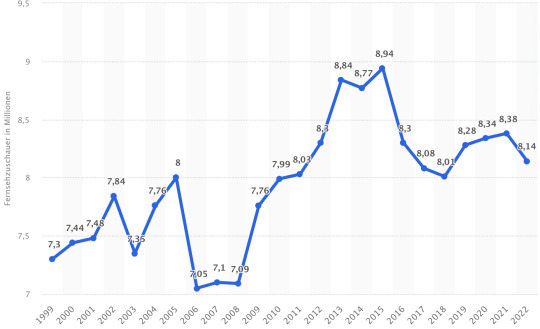

[translation in alt] well as you can see, usually there’s about 8.something million viewers that have been watching the Tatort episodes in recent years, which means the 9.5 Million edit: 9.05 million are quite a few more… It’s not the most popular one tho:
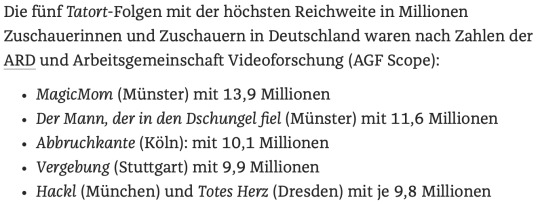
[translation in alt] - from 2023
So in general less people watch the Tatort episodes and also the Tatort Saarbrücken (Spatort) episodes got less and less viewers over the years:
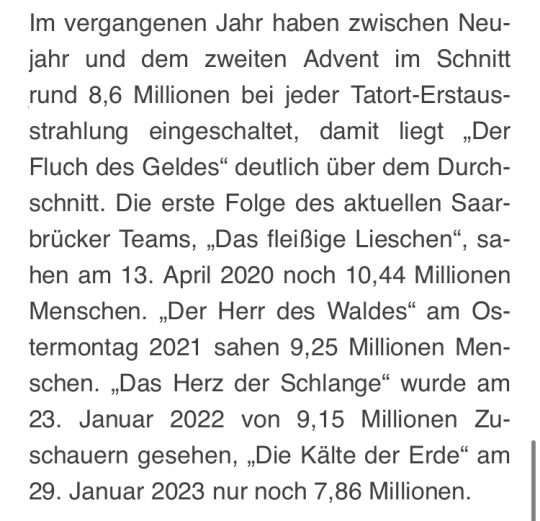
[translation in alt]
now 9.5 edit: 9.05 doesn't match the 10.44 million of 2020 but it is an improvement considering it's been going down in general and also Tatort Saarbrücken specific.
The impressive thing (as I've understood it) is the market share they reached, which refers to the percentage of households that watched this show, measured against the total number of households who were watching television at that specific time. Tatort Saarbrücken reached 30,2% which means out of all the programs that were broadcasted more than 1/4 were watching Spatort at that time. (Which again is higher than the average (28.6%), but still not as high as the most popular Tatorte) (It's also the highest Tatort Saarbrücken reached in 30 years)

[translation in alt] - 2023
What may also be impressive is that the city Saarbrücken is rather "small" (with 167,1 km² and a population of 178.151) and still reaches this high of a viewership... compare that to the other popular Tatort cities Münster (302,9 km², 314.319), Köln (405,2 km², 1,086 Million), Stuttgart (207,4 km², 634.830), München (310,7 km², 1,472 Million) and Dresden (328,8 km², 554.649)
now I hope I answered your questions the way you wanted/needed me to (and I also hope I didn't get all the stuff wrong since I don't watch the other Tatorte and don't really know how the whole viewership/market share works)
If someone who knows more about that stuff is reading this, you could tell me whether I'm explaining this correctly or if everything I said was total bullshit...
if you have any other questions tho I could try to answer :))
39 notes
·
View notes
Text
Stray kids as cars
Author note: okay so, I think that this needs a little explanation, I grew up between cars and motorbikes because my grandpa used to work as a mechanic.
When I was little and even now I see cars as people, I swear I’m not crazy but there’s some cars that are happy, some cars that are angry, some cars that are sad, so I thought that it would be fun to write this thing.
I’ll probably do the same thing with motorbikes. :)
Interactions and reblogs are appreciated! expecially bc I put my blood and soul on this thread
You can find the maknae line here
Please don’t do stupid shit while you’re driving, drive responsibly and DO NOT DRINK AND DRIVE
-✉️
I’m so insicure about my English, as I said it’s not my first language and I’m always scared to make mistakes or stuff like that, so if you find mistakes please let me know, I’ll be thankful and also my English will improve!
-✉️
Tags: @ilevaar 💛
HYUNG LINE
Bang Chan: FORD MUSTANG
Expensive and fast
above $58.000
Black it’s THE color for this expensive baby
0-100 km/h in 4.3 seconds
Literally the leader of the road
THE CAR OF MY DREAMS BUT I’M POOR AS FUCK
You need a huge pair of balls to drive this beast
Has a passenger seat but you NEED to trust the driver in order to enjoy the trip, and if the driver was Chris, man I would sleep like a baby, he’s a responsible king and I love it.
Hand on your thigh, or YOUR hand in his thigh is a must, definitely he has blankets in the back seat in case you get cold.
Everyone has their eyes on this car.
It belongs to German highway (Germans highway has no speed limit)
very comfy you can do the naughty naughty things in it
WEAR YOUR SEATBELL👹

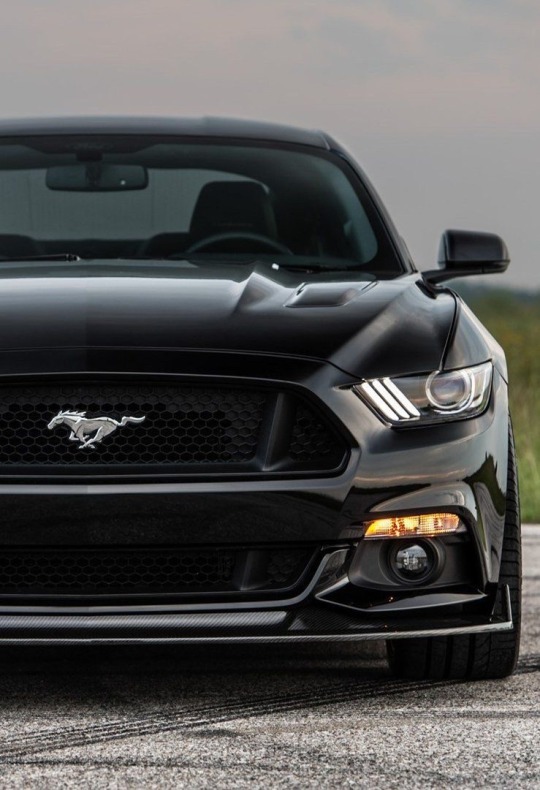
Changbin: TOYOTA SUPRA
Once again expensive and fast
above $60.000
Cute and small but has a beast in it
0-100 km/h in 4.3 seconds
Usually used for drifting, but if you drive this on the road everyone it’s going to be like OMG THATS A SUPRA
Purple/pink it’s THE color for this car
Comfortable as fuck but it’s only for two people, so that’s the right car to bring only your s/o in it
as I said it's small but nothing can stop the naughty naughty things
It’s a softie on the road but with the motor that it has, people it’s going to see only your butt cheeks hehe
Once again, belongs to the German Highways and Tokyo (you know Tokyo drift)
as I said It has a passenger seat but since I can’t drift (yet) I’ll let the driver do it
If Changbin was the driver his hand would be GLUED to your thigh and definitely has some good playlists to enjoy the trip and some good snacks
(Yes, he’s part of the snacks)
WEAR YOUR SEAT BELL👹


Hyunjin: LYKAN HYPERSPORT
once again this beauty it's expensive as fuck
this car is RARE
LITERALLY just for a few people, in fact there's only seven examples in the whole world
above $ 3.690.000 (yes, you heard it right)
When I say fast I mean it 0-100 km/h in 2.8 seconds, do the math if you don't believe me
red it's THE color for this car
look at it, mad as fuck LITERALLY a beast
it has a passenger seat but honestly I would rather be the driver even if it scared the shit out me
Hyunjin would let you drive it because he turns on when he sees that you’re able to drive a beast like this
If he’s the driver he want physical contact so you guys hold hands or both of your legs are straight on his lap
not too comfy for the naughty naughty thing
Since this car is rare you have to be careful where you drive it, but definitely once again belongs to the German Highway even if I would protect it with my life✋🏼
WEAR YOUR SEATBELL👹


Lee know: LAMBORGHINI URUS
(Don’t come at me I have expensive taste okay)
I mean look at this its Minho coded
Expensive and of course fast
This car is HUGE since it’s a suv
Above $230.000
0-100 km/h in 3.3 seconds
Black it’s THE color for this car
This bitch it’s fast, and I’m proud to say that this piece of art is made in Italy
Another car of my dreams but I’m still poor af
This car gives me such a big dick energy that I can’t even explain (so definitely Minho coded)
It’s big, spacious and comfortable definitely a place where you can do the naughty naughty stuff
This car belongs to the german highway (yes, once again) and the street of some fancy city like Monte Carlo or Courmayeur
I would love to be the driver of this piece of art but if I think about Minho hands-on-the-steering-wheel fuck it okay? He can drive it.
he needs to touch you so hand on your ties or locked in yours is a must
WEAR YOUR SEAT BELL👹


I spent two days working on this so please don’t let it flop.
As always requests are open!🩷
#skz#stray kids#stray kids x reader#skz hyung Line#bang Chan#bang chan x reader#changbin#changbin x reader#hyunjin#hyunjin x reader#leeknow#lee know x reader#cars#Lamborghini urus#toyota supra#Ford mustang#lykan hypersport
61 notes
·
View notes
Text
Happy Birthday 🎂 🥳 🎉 🎈 🎁 🎊 To You
The Loveable & Superb American Actor👦🏻 Who Gained His Way To Stardom in 2006
PLAYING THE LEGENDARY MAN OF STEEL 🦸♂️
Born On October 9th, 1979
Routh is the third of four children born to Catherine LaVaughn (née Lear), a teacher, and Ronald Ray Routh, a carpenter. He was raised in nearby Norwalk. Routh was raised in a Methodist family, and has English, Scottish, German, Irish, Welsh and Dutch ancestry.
Routh grew up in Norwalk, approximately 100 miles (160 km) south of Woolstock, the birthplace of George Reeves, the first actor to play Superman on television. During his childhood, Routh thought a full-time acting career was unrealistic, citing his small-town background. In his spare time, he played the trumpet and the piano.
Routh attended Norwalk High School, where he played sports, and participated in music and theatre. He attended this school at the same time as Jason Momoa, who would also later become an actor in film adaptations of DC Comics. He has described himself as a "momma's boy" and not "the most popular kid" during his school years. Routh has also noted that during his younger years, he was fond of the Superman films and comic books.
Routh attended the University of Iowa for a year, aspiring to be a writer. During this time, he modeled and acted in order to earn his tuition expenses.
He is an American actor. He portrayed Superman in the 2006 film Superman Returns, which garnered him international fame. In 2011, he played the title character of the film Dylan Dog: Dead of Night. He also had a recurring role in the NBC series Chuck, as Daniel Shaw. Routh also played a supporting role in the film Zack and Miri Make a Porno (2008), and played Todd Ingram in the film Scott Pilgrim vs. the World (2010), reprising the role in the animated series Scott Pilgrim Takes Off (2023).
Routh has said he was often told that he bore a physical resemblance to Christopher Reeve, who had previously portrayed Superman in a film series. His former manager signed him on because of the resemblance, telling him that he thought Routh would be cast as Superman if there were another film in the series.
In 2014, Routh once again played a superhero for DC Comics as Ray Palmer / The Atom on The CW's Arrow. He was a recurring character throughout season three.
In January 2015, Arrow's co-creator and executive producer Greg Berlanti stated that they were in the midst of "very early" preliminary talks for an additional spin-off series centered on Ray Palmer/The Atom.
In the superhero series Legends of Tomorrow (2016–2022), Routh co-starred as The Atom, along with Arthur Darvill, Wentworth Miller, Victor Garber, and Caity Lotz.
Routh reprised his role as Clark Kent / Superman in the 2019–2020 Arrowverse crossover "Crisis on Infinite Earths", affected by events adapted from the Kingdom Come storyline.
Please Wish This Superb & Incredible American Actor & Avid Gamer & All Round Comic Book Fanboy Lover
A VERY HAPPY BIRTHDAY 🎂 🥳 🎉 🎈 🎁 🎊
YOU ALL SHOULD KNOW HIM SINCE 2006 & IF YOU DONT. YOU BETTER HAVE SEEN HIM IN HIS LATER ROLES IN ACTING...
HE PLAYED THE ROLE OF THE 1# GREATEST SUPERHERO OF ALL TIMES IN THE WORLD🦸♂️ 🌎✨
& HE STILL REMAINS LOYAL TO THE DC COMICS CAUSE & IS A HUMBLE BUT GENUINE PERSON AS WELL AS ACTOR OF SUPERHERO ROLES
THE 1 & ONLY
MR. BRANDON ROUTH 👦🏻AKA SUPERMAN 🦸♂️ OF DC COMICS, SUPERMAN 🦸♂️ RETURNS & RAY PALMER AKA THE ATOM ⚛ OF DC'S LEGENDS OF TOMORROW ⏳
HAPPY 45TH BIRTHDAY 🎂 🥳 🎉 🎈 🎁 🎊 TO YOU MR. ROUTH🦸♂️ & HERE'S TO MANY MORE YEARS TO COME








#BrandonRouth #Superman #ClarkKent #KalEl #DylanDog #TheAtom #RayPalmer #SupermanReturns #DylanDogDeadOfNight #Arrow #TheFlash #LegendsOfTomorrow #Supergirl #BatWoman #ArrowVerse
#Brandon Routh#Superman#Clark Kent#Kal El#Dylan Dog#The Atom#Ray Palmer#Superman Returns#Dylan Dog Dead Of Night#Arrow#The Flash#Legends Of Tomorrow#SuperGirl#Batwoman#ArrowVerse#Spotify
9 notes
·
View notes
Text
Priority Research 7 Predictions - Ironblood
Screw it. Time to speculate who the mandatory Ironblood PR is going to be.
As always, these are just the possible options, alongside speculation about their rarity - either PR (Priority Research/SSR) or DR (Decivise Research/UR), and maybe some vague idea about what their skills could be in Azur Lane.
The Ironblood have, perhaps unsurprisingly, a lot of options; just like the Northern Parliament.
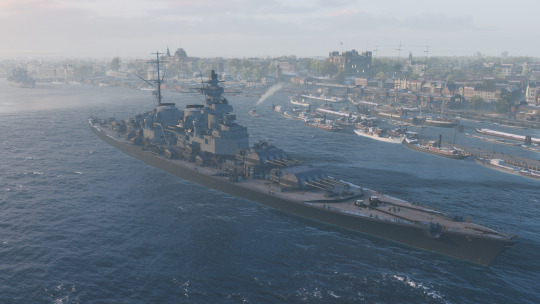
KMS Mecklenburg
Fuck it. Let's start strong.
Mecklenburg is, essentially, a battlecruiser. She shares her hull with both Preussen and Großer Kurfürst, however, the main difference with both of those ships (Preussen having eight 457mm guns and G.K having twelve 406mm or 420mm guns (depending on your setup)), is that Mecklenburg has sixteen 305mm guns. With a 26 second reload. And an anomalously high (for a German battleship) main gun accuracy.
This thing is a ludicrously effective cruiser hunter. She has fast shells with an almost pin-point accuracy.
Mecklenburg also has two quadruple torpedo launchers, one per side, on top of the standard highly efficient secondary gun layout comprising of 128mm gun turrets that enjoy German 1/4 HE penetration rules. Oh, also, she's faster than both Preussen and G.K (both doing 30 knots), at a top speed of 32.5 knots.
Yeah, Mecklenburg is easy DR material.
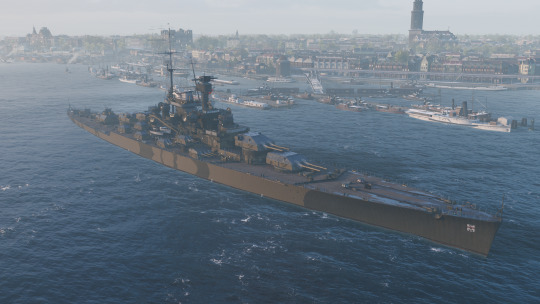
KMS Schröder
Schröder is a personal favorite of mine. You can think of her as a "mini-Prinz Rupprecht".
As a supercruiser, Schröder has eight 305mm main guns in dual turrets. She has no torpedo armament to speak of. Her gimmick(s) lay on the fact that Schröder is one of the best secondary gun cruisers in the game, rivaling both Napoli and Michelangelo (which We'll Get To in the Sardegnan post). A total of 5 dual 128mm gun turrets per side as well as a total of 3 triple 150mm gun turrets (the same ones Nürnberg has in total), and a maximum range of 12km; Schröder has very fun secondary guns.
On top of that, she gets access to a very high base speed of 32.5 knots and a speed boost consumable that boosts her speed by 15% for 3 minutes. Schröder is great at flanking as she can relocate from one side of the map to the other in a relatively short time.
Honestly, she works as either a PR or a DR; but I would prefer her being a DR.
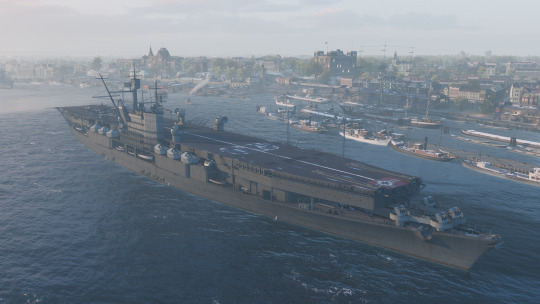
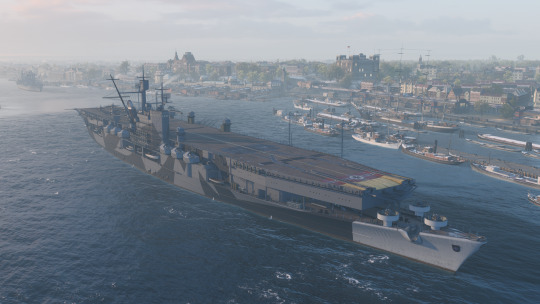
KMS Manfred von Richthofen and KMS Max Immelmann
I'm putting them together as equally likely DR candidates for a simple reason: the only thing that differs is their air complement.
To simplify Richthofen; she's a bigger August von Parseval. Both are carrier conversions of the H-39 battleship design (so, Friederich der Große sisterships).
Max Immelmann only has access to torpedo bombers and skip bombers - the same kind of bombers found on the Soviet aircraft carrier line (so, Chkalov).
Richthofen is a standard research ship and Immelmann is a premium ship. Immelmann was over-hyped by the community as a much superior carrier to Richthofen (the entire tech tree line of German CVs is impressively bad), but she's mediocre at best. Honestly, the funniest thing you can do with both carriers is a full secondary gun build; but Graf Zeppelin is much better at that at Tier 8 than these two at Tier 10.
However, Azur Lane has a track record of taking mediocre-at-best warships and turning them into very good PRs; so if any of the two gets chosen, I have hopes.

KMS Z42
From my cursory two-minute-long Google search, it seems Z42 in this configuration was never planned - or that there was never a Z42 to begin with, I can't find concrete info on that (again, after looking at it for two minutes. I'm sure there is actual info somewhere).
Z42 is a surprisingly good little ship. Her torpedoes are rubbish, but they're not the star of the show. Z42 utilizes German 105mm secondary guns as her main guns - here they are on the sides of Bismarck:

These funny little guns share the standard German 1/4 penetration rules for their HE, meaning that despite the smaller caliber they deal a considerable amount of damage. On top of that, they get access to AP; a thing that doesn't exist when they're in secondary gun form, and this AP does very funny damage against anything broadside.
She's PR material, just like Felix Schultz, but she could be a very good mini-Roon in terms of gameplay and abilities in Azur Lane.

KMS Wiesbaden
To me, this is the 'fuck it we ball' option. Wiesbaden is still in testing, she isn't in the game yet; but I believe she might release very soon.
Wiesbaden is a T8 light cruiser equipped with 6 dual 128mm gun turrets. That's right, she's a German Atlanta!
While Atlanta and Flint have a 4.8 second and 5.1 second reload respectively, Wiesbaden "enjoys" a 6 second reload on her main guns. However, that is compensated greatly by the fact that as all other HE guns from Germany, she has - you guessed it - 1/4 pen on HE shells, as well as six torpedo tubes per side with an 8.5km range. Oh, and a smoke screen generator. Like a destroyer.
Undoubtedly, Wiesbaden would be a PR in rarity.

KMS Preussen
Finally, the Roon-to-Hindenburg analogue of Friederich der Große. Preussen is an enlarged Friederich der Große, a made-up modification of the H-42 design with 457mm main guns. The real H-42 design isn't present in World of Warships; however, H-43 is the Superbattleship Hannover. But that's besides the point.
Preussen is a bigger FdG, so why her? We already have FdG and she's already a DR. This option is more based on vibes than anything else, as Hindenburg is a bigger, better Roon. Preussen could be the same: imagine a battleship that can equip two main guns instead of just one. Also, it's been a few years since PR2. PR7 is as far away from PR2 as PR6 was from PR1, and Roon was a PR1 shipgirl.
I don't know. She's more of a random guess. G.K is more likely, but I'd prefer Mecklenburg over G.K personally.
15 notes
·
View notes
Text
The Far Side for Sunday 4/28.

Yes, Snoopy fought the Red Baron In the skies over Verdun in the the Meuse département, occupied France on January 30 1916 and was shot down behind enemy lines. After being captured In a small cafe in the village Belleville-sur-Meuse the next day, he was briefly held at the German compound at Sivry-sur-Meuse Aerodrome, 20 km NNE of Verdun. On 1 February 1916 he escaped in a stolen Fokker DVII, and was shot down AGAIN, this time by Nieuports flown by his own squadron, but behind Allied lines. He lived to fight another day...
15 notes
·
View notes
Note
what are some underrated boats that you dont think get enough love or appreciation and why?
sincerely,
#1 sailboat fan ⛵
For me, I'd say White Star Lines SS Germanic. She was 455 feet long and 5,008 Gross Registered Tons. She was delivered to the White Star Line in 1875 as the sister of the SS Britannic. These ships were largely considered to be a scaled up version of the Oceanic class from 1870, but her career is what makes her interesting to me. She had 1 propeller powered by compound steam engines, and a service speed of 16 knots (30 km/h, or 18 mph). At this speed, she and her sister won back the Blue Ribband for the White Star Line. Like the Oceanic class, she was rigged as a barque with sails in case of emergency, which came in handy when in January of 1883 her propeller shaft sheared at sea, and she had to make the rest of the journey by sail. She was the last White Star liner to be constructed primarily out of iron. After her, all of their ships were made from steel. In April of 1885, she encountered a rogue wave, which struck her and caused substantial damage. Six lifeboats had been torn away, the skylights to her engine rooms were smashed, and her pilot house was crushed. Water flooded into the boiler and engine rooms, a hole was torn into the side of the reading room, which quickly flooded (followed by the saloon and staterooms), and 13 people were injured, with one sailor being washed overboard. On 13th of February 1899, she was caught in a massive blizzard at her pier in New York. An estimated 1,800 Tons of snow and ice fell atop her superstructure. This added weight was enough to make her list enough that water could enter her open Coaling ports. She sank at her pier. She was refloated, repaired, and resumed service three months later. Starting around 1904, she changed hands numerous times, until finally landing in the Ottoman empire, and being renamed Gul Djemal / Gülcemal. She served as a troop transport until 1920, when she became a passenger ship again. She was retired from service in 1937, but wasn't scrapped until 1950. There were plans to convert her into a floating hotel (like the Queen Mary would be in 1970) but this never came to fruition. Having been in service for 75 years, she is the second longest serving ocean liner, behind Cunard Line's SS Parthia. She survived both World Wars (even though she played no part in the second World War). Her sister ship Britannic was scrapped in 1904, after serving in the Second Boer War as a troop ship.
24 notes
·
View notes
Text
The total land area of all US states is around 9.14 million square km; the US has 3134 counties or county-equivalents, and in most of the country these are a pretty consistent size. there are a few weird states: Alaska has very big boroughs because of its low population, and much of the state is not organized into any borough. Virginia has a lot of independent cities (38 out of 41 in the entire country; most other states just consolidate city and county governments if a city gets very big).
Among all states east of the Mississippi, excluding Virginia, counties are about 1,423 km square (1369 if you include Virginia and count its independent cities as counties). If you include the states just across the Mississippi River, which mostly have counties about the same size as the states just to their east (here I am including Texas, Louisiana, Arkansas, Iowa, Kansas, the Dakotas, etc.; but nothing further west than the Texas/North Dakota axis), average county size rises only to 1,762 km square. Just within those states of the "nearer west," county size is about 2,220 km square, which is bigger, but not crazy bigger.
Further west, especially in states like Nevada, Utah, and California, counties get very big. Among all states west of the Texas/North Dakota line, counties average around 10,300 square km. But among all states, average county or county-equivalent size is 2,921 km square.
"County" as administrative division descends of course from English counties, which were originally feudal divisions. So how big are U.S. counties compared to their European predecessors? About the same size! England has a land area of ~130,000 km square and 48 ceremonial/historical counties (it has many more local government areas in the modern era). English counties are 2,700 km square on average, about the size of U.S. counties--in fact, maybe a little bigger than most U.S. counties. Ireland has an area of 84,421 km square (not sure what percentage of this is land) and 32 counties, for an average county size of 2,638 km square.
The U.S. state with the fewest counties is Delaware, which has just 3 (1,682 km sq each). The U.S. state with the most is Texas, with 254 counties (2664 km sq each--just a little bit bigger than Ireland!). The state with the biggest counties (again, excluding Alaska, because the unorganized borough messes things up) is Arizona, whose counties are on average 19,614 km square--just seven Arizona-sized counties would cover all of England. The state with the smallest counties is Rhode Island, whose counties average 536 km sq--at 3,144 km square in total, Rhode Island itself is smaller than the average county in fourteen states.
In terms of population, of course, the size of US counties probably varies even more wildly than their land area, but on average they compare reasonably to the local administrative divisions of other countries (some of which are third-level and some of which are second-level, depending on their size). U.S. counties have a population of about 108,000 on average. In the Republic of Ireland (so, not including the six counties of the North), counties have an average population of about 192,000. In Germany, local government areas (Kreise) have an average population of about 207,000 (though the three city-states of Berlin, Hamburg, and Bremen complicate this picture somewhat). The actual on-the-ground local government scheme in England is complex, and it is not clear to me what the modern U.S. county or German Kreise equivalent would be.
#i was going to compare france and spain also#but metropolitain france has only 94 departments#which are large in terms of population#(almost 700000 people each)#and the next functional level of government#seems to be the *much* smaller commune#of which there are tens of thousands#spain also seems to have a pretty complex diversity of local government arrangements#depending on the status of individual regions
38 notes
·
View notes
Text

Vettel back at the wheel He simply loves speed. For 16 years, Sebastian Vettel (36) raced as a Formula 1 driver on the racetracks of thr world, crowning himself world champion four times. Last season, the German ended his career and hung up the steering wheel - until now. But fans dreaming of a comeback of the German from Heppenheim in the top class of motorsport will be disappointed. Vettel won't be getting behind the wheel again, but he will be getting on the sailboat! And with his own team! The ex-Ferrari and Red Bull driver recently invested in the German team "SailGP" and is now a co-owner. With the crew around pilot Erik Heil, he now took to the water in Long Beach near Los Angeles (United States) after completing a one-hour safety briefing. Vettel said after his ride: "It was impressive. Completely different from what I expected. I am very impressed by the G-forces that acted on me while driving. I didn't expect it to be so strong. When I was turning the boat, I sometimes wished I had my seatbelt." The speeds were considerably lower than what Vettel is used to from Formula 1. The F50 catamaran reached a maximum of 64 km/h with the celebrity guest on board. Vettel himself also took the wheel at one point. "It feels much faster on the water than on land. And when the catamaran starts to foil, it suddenly becomes very quiet and only the sound of the wind gets louder and louder," explains Vettel. However, his team is not yet quite as successful as Vettel was in Formula 1. Even though they have not finished last in any of the races so far, the sailing crew came tenth out of ten in the overall standings. Perhaps co-owner Vettel can give a few tips so that his team will soon be as successful as he was on the race track! translation by @.danke_seb on twitter!
#sebastian vettel#f1#formula 1#fic ref#fic ref 2023#not a race#2023 not a race#between britain and hungary 2023#sailgp#sailgp 2023#(note to self: port of los angeles. july 23 2023.)
42 notes
·
View notes
Text
We walk everyday in our neighborhood. We've been seeing an elderly man bicycle up and down and up and down the side streets. We wave and move on.
This week he stopped and we learned he'd been living in the neighborhood for 5 years, was from India, speaks Telegu and was interested in practicing his English. He rides 30 km a day and has lost 20 kilos. He is 71 years old and his wife is 65. She does not ride but likes to walk.
He is getting tired after 5 years of riding up and down the same side street so his son, a software engineer, is helping him map out safer longer distance rides. Next time we saw him we said Namaskaram
Our neighborhood has been growing and changing and we love it. Last year we ran into an elderly Algerian couple who were very lost. They only spoke Arabic and French. The husband had dementia & the wife was trying to get back to the house they were visiting. Neither of us speak French
Well, I speak a little French, enough to understand that the husband had dementia and kept asking to walk to the ocean. The wife handed us her phone and we saw a phone number which we called but got no answer. We reverse googled the number and came up with a nearby address. But they couldn't understand the directions we tried to give them.
So we gestured for them to follow us & we walked them to the address. Both of them kept talking as we walked which is how I learned the husband wanted to find the ocean because I recognized the word for ocean in French. At one point I stumbled & swore in German (Long story about why we speak multiple languages, none of them very well)
Turns out the husband spoke fluent German so for the last blocks he and I were able to actually communicate somewhat. His dementia was quite severe because he stopped to try urinate on a tree (his wife kept frantically saying: "le bébé, le bébé" because (I think) she was worried we'd think he was exposing himself. I kept saying to her that it was OK, I have a family member with dementia ("ça va. ma mère aussi" is what my brain came up with). Like I said, I only know a few words in French). We've never seen them walking again which is probably good considering his health issues.
Encountering our neighbors is one of the reasons we love walking our neighborhood everyday. And the crows, cats, dogs, babies in strollers, kids being walked to school, fence lizards. And now gophers
6 notes
·
View notes
Note
Yess uni has been scaring me 😭 I'm also considering schooling in Germany lolll. First it's cheaper than studying in Canada and I have a lot of relatives there (I've been thinking of getting German citizenship because my father is German). Idk University of Berlin looks cute but I'd definitely have to learn that hard ass language. My younger siblings are German and so whenever I meet them every summer they're speaking heavy German and I'm like ".....??" Literally my 5 year old brother can switch between German and English so I get him to translate stuff for me 😂😂 I remember going to the store and I was feeling so proud when I spoke to the cashier in German (I said Hello and thank you). Anyways, I see myself having an 80- late 90 average. Last year my average was like 90 or 89 something like that. But my mum keeps PUSHINGGG for 90s like 😭
///
uni will humble u so bad 😭😭 i also used to be a high average student and then i started uni…when i tell u that most classes need a C- or above, if i saw a c- id be throwing parties like it’s HELL out here
omg germany???? no fr it’s so cute but the language??? id be ‘ich liebe dich-ing’ everywhere tbh 😭😭 but like lowkey i’d be so isolated there,,, ive heard mcgill is the cheapest after new burnswick for law school and tbh mcgills culture is nice,,,, SEWDEN is also madd cheap, lowkey kinda considering it,,, i refuse to go to america bc im scared but nyu ☺️☺️🥰 i’d def go bankrupt there— tho idk if u know but if u go to uoft they have links w ny law firms, u can directly go work there thru them !!! but then i’ve heard that study where ur gonna practice bc you’d probably have to do the bar again
LMFAOOO. I have family members there so I guess it wouldn't be that bad but the language fucks me upppp. I remember one time I was at my dad's house, the delivery guy came to me and started speaking german 60 km/hour and I was like "um..... dad not home". Sweden is alright, for me I think Poland is madly underrated. I've been there a few years ago and I LOVED it. I also was at one uni (I forgot the name) because my mum's uni had a program with the uni over there. NYU is such a dream though but sooo pricey. I've been thinking of doing immigration law or maybe something in finance? What law practice do you plan on doing?
3 notes
·
View notes
Text
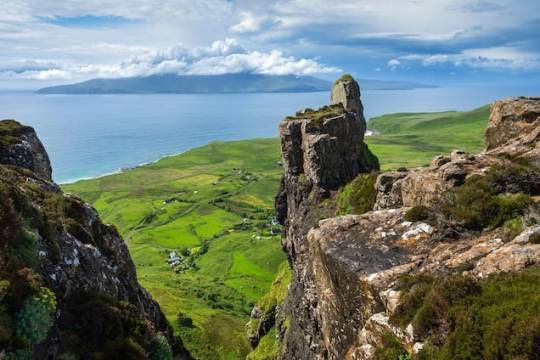

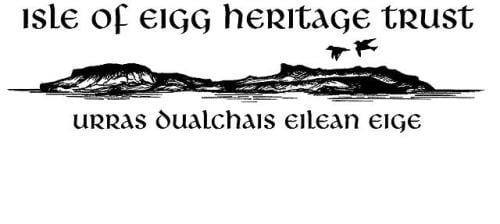
12th June 1997 saw The island of Eigg pass into community ownership when it was purchased by the Eigg Heritage Trust.
After years of instability, neglect and lack of secure tenure, the Isle of Eigg Heritage Trust was able to purchase the island on, largely due to the generosity of around ten thousand members of the general public
The Hebridean island of Eigg is second to St Kilda as the most famous of the smaller Scottish isles. While St Kilda is renowned for its extinction as a place of human settlement, Eigg is celebrated for its rebirth. After overthrowing its eccentric, authoritarian owner two decades ago, this 31 sq km (12 sq mile) patch of moor and mountain was reborn as what is sometimes mockingly called the People’s Republic of Eigg.
This triumph of David versus Goliath has forged an apparently inspirational, sustainable community of 100 people.
A series of owners tried unsuccessfully to run some sort of business on Eigg during the latter part of the 20th century, from the Welsh Farmer whose Hereford cattle promptly died of bracken poisoning. Disheartened, he got rid of Eigg for £110,000 in 1971 to Bernard Farnham-Smith, self-styled naval commander, head of an English charity that wanted to run the island as a school for disabled boys, by 1973 the Eigg’s own school had only one pupil. Rather more successful was eccentric Keith Schoenberg, a dashing, Yorkshire-born businessman and former Olympic bobsleigher, acquired Eigg.
He was a charming, persuasive adventurer, who, over the next 20 years endeared himself to the guests by allowing them to perch on the running board as he drove them to beach picnics or moonlit games of hockey. One failed marriage after the other ended with him reluctantly having to sell the island in 1992 in his divorce settlement, in a surprise move he ended up bidding and became sole owner of Eigg, this didn’t go down well with the Islanders who were tiring of him, culminating in a fire in sheds on Eigg’s pier, with Schellenberg’s Roller inside. Police arrived but noone was ever brought to justice for the arson attack, maybe the Polis were just happy to get off the island alive rather than ending up in a wooden effigy atop a bonfire! “It was once the laird’s factor [his estate manager] who went about burning people out. Now it seems OK to burn out the laird himself,” fumed Schellenberg.
By 1995 he had enough and put the island up for sale, but refused to sell to the population, it should really be of no surprise that the knew owner seemed more eccentric than the previous one, self style Professor Gotthilf Christian Eckhard Oesterle was a fire-worshipping German artist and self-styled “professor” who went by the name of Maruma having read the new name in a pool of water in Geneva.
He declared it was impossible to own Eigg and vowed to improve opportunities for the community, build a swimming pool, and replace the dirty diesel generators that provided electricity with an integrated system of wind and solar power. The press discovered that, unfortunately, Maruma was not quite what he seemed: he was unknown in the art world, he wasn’t a proper professor, and he had used Eigg as security for a £300,000 loan at a punitive 20% interest rate. He promised to remove the island’s rusty old cars, but a pile of wrecks soon accumulated by the pier: locals dubbed it “the Maruma centre”. In July 1996, the island was put up for sale again, at an inflated price of £2m.
The Islanders Trust rthrew themselves into raising the asking price. . The story of the islanders who wanted to buy their own island was portrayed as a jolly romp in the style of Compton Mackenzie’s Whisky Galore, in which Hebridean islanders rebel against British bureaucrats. Eigg folk didn’t particularly relish this stereotype, but it captured imaginations and raised money.
Donations began flowing in at the rate of £1,000 per post bag; soon it was £30,000 per bag. Concerts took place in Edinburgh, Glasgow, Tyrone – and even Detroit – to raise funds. A mystery benefactor, a woman from northern England whose identity remains secret. gave £900,000. Most donations came from England. Outsiders were shocked by the feudalism that the islanders endured – the owners even decided which of them, if any, could eat Eigg’s seaweed – and worried about the possible fate of its pristine environment. The wildlife trusts, including the Scottish Wildlife Trust, were particularly effective at mobilising their members to help Eigg.
Meanwhile, the island’s Trust feared that Maruma’s German estate agent would sell Eigg to another international client. The agent described the Scottish islands on his books as “the Van Goghs” of 120 personally inspected paradises: “There is a sense of romance in buying islands. It is the ultimate purchase you can make, a complete miniature world of which you can be king.” Maruma’s creditor, a German clothing exporter, finally put the islanders out of their misery. After Maruma defaulted on his £300,000 loan, the creditor used the Scottish courts to force Eigg’s sale. His solicitors accepted the islanders’ offer of £1.5m on 4 April 1997. Finally, the people of Eigg owned their island.
Recently the Island's trust advertised the two raree jobs on Eigg of a head teacher and a warm homes manager
Eigg has been hailed as Scotland’s most Eco-Friendly Island and the community trust are doing a great job of running a successful business, which includes offering accommodation, courses and working holidays for volunteers, you can read more about the Island on their website here. http://www.isleofeigg.org/
46 notes
·
View notes